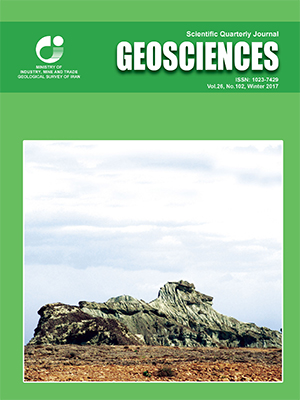Document Type : Original Research Paper
Authors
1 Ph.D. Student, Department of Earth Sciences, Faculty of Natural Sciences, University of Tabriz, Tabriz, Iran
2 Associate Professor, Department of Earth Sciences, Faculty of Natural Sciences, University of Tabriz, Tabriz, Iran
3 Assistant Professor, Faculty of Basic Sciences, University of Birjand, Birjand, Iran
4 Assistant Professor, Faculty of Basic Sciences, University of Zanjan, Zanjan, Iran
Abstract
The early Cretaceous sedimentary sequence in south of Yazd hosts numerous Zn-Pb-Ba mineralization horizons. The sequence based on the stratigraphic position, age and composition of the rocks, can be divided into tree lower, middle and upper parts. The lower part or Sangestan formation mainly formed from clastic sedimentary rocks such as conglomerate, sandstone, shale, siltstone and oolitic limestone. The thick Sangestan sedimentary sequence is well exposed resting unconformably on the Jurassic Shir-Kuh granite and metamorphic Shemshak Group. The middle part or the Taft formation include organic matter-rich shale, siltstone, limestone and dolomite. The upper part or the Abkuh (Darreh-Zanjir) formation comprised of shale, chert-bearing bedded limestone and marls, overlying concordantly on the Taft formation. The Zn-Pb-Ba mineralization horizons within the sedimentary sequence, based on stratigraphic position, relative age and type of host rocks involved the two horizons: the first horizon consisting of Mehdiabad, Farahabad and Mansourabad deposits, occurred in the lower part of the Taft formation and hosted by organic matter-rich shale, shaly limestone, siltstone, silty limestone and dolomite. The second horizon comprising Mehdiabad and Mansourabad deposits are hosted by black shale and chert-bearing bedded limestone locates within the middle part of the Abkuh formation.
Keywords

